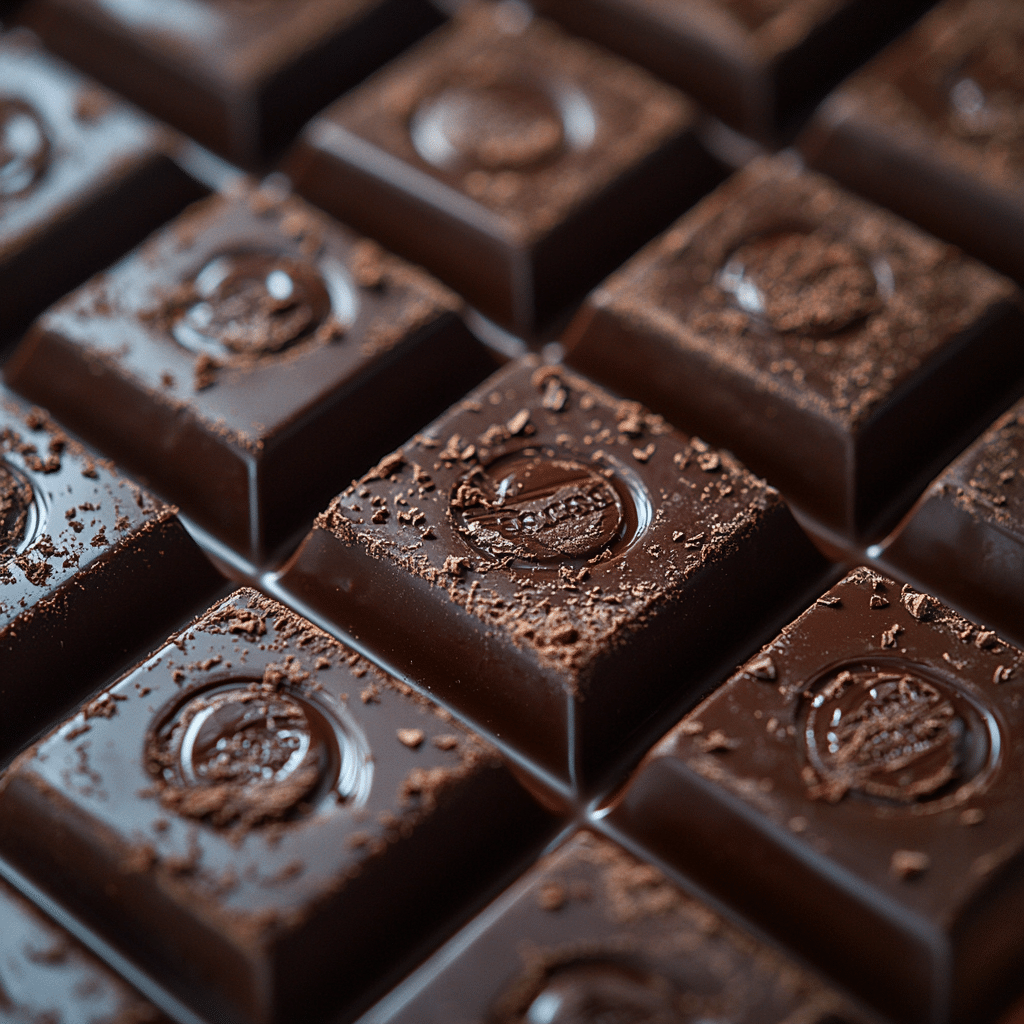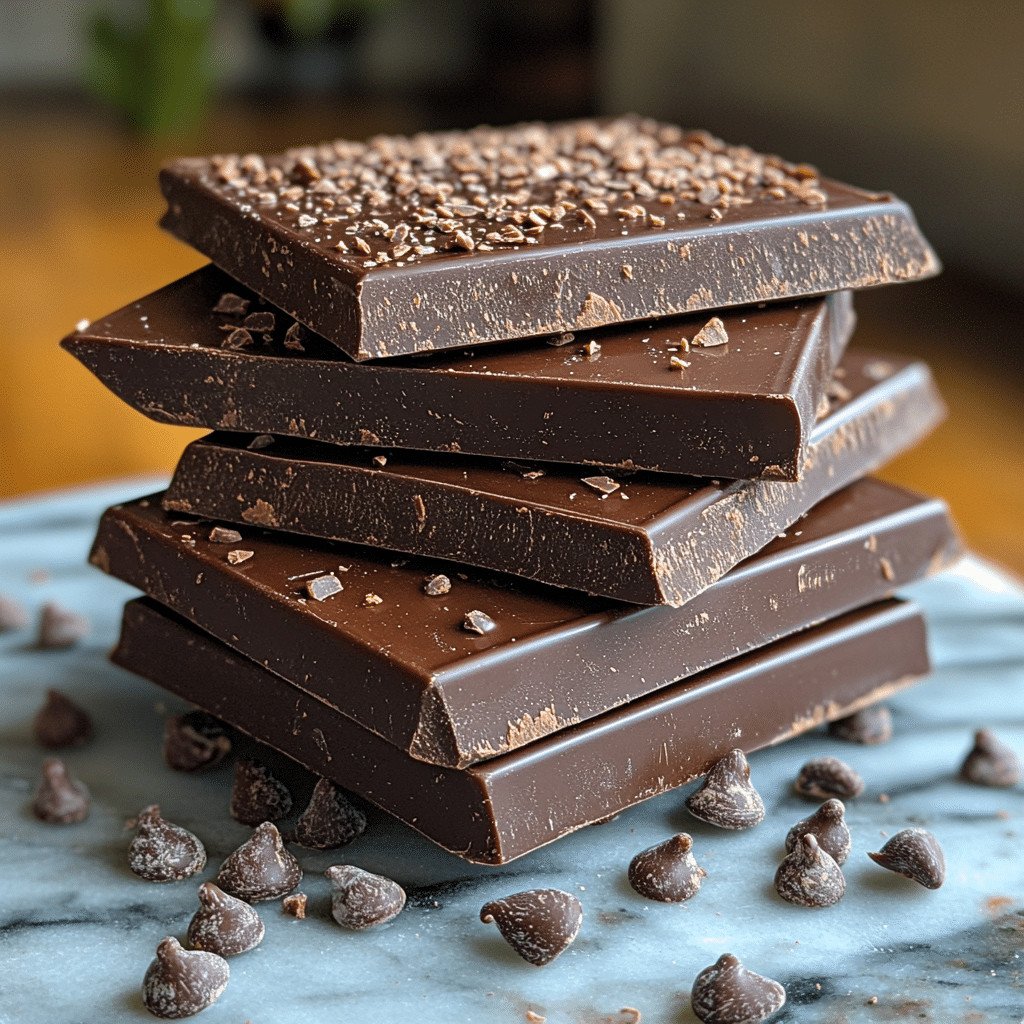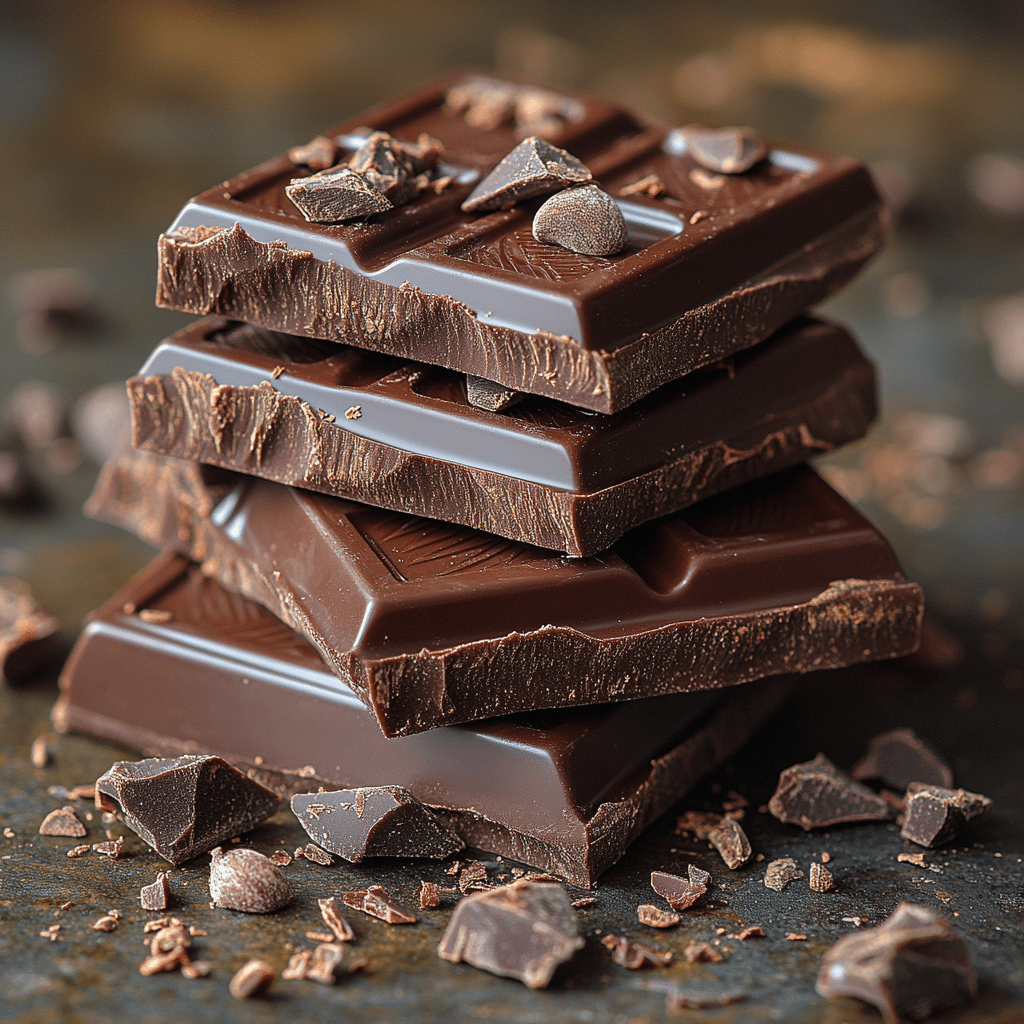Hershey chocolate has long reigned as a beloved brand in the hearts and taste buds of Americans. With its rich history and extensive product line, the Hershey Company has created a legacy that makes it synonymous with chocolate in the United States. Founded in 1894 by Milton S. Hershey in Hershey, Pennsylvania, this iconic brand has taken sweet treats to another level through continuous innovation and a commitment to quality. So why does Hershey chocolate continue to captivate candy lovers across the nation? Let’s dive in and explore the undeniable charm of Hershey chocolate and its far-reaching impact on both culture and commerce.
7 Irresistible Hershey Chocolate Products That Lead the Market
When digging into the world of Hershey chocolate, you’ll find more than just the classic bar. Here are seven popular Hershey chocolate products that hold a special place in consumers’ hearts:
The iconic Hershey’s Milk Chocolate Bar remains a staple of American culture. It’s hard to resist the smooth, creamy texture wrapped in that classic brown-and-silver foil. Whether consumed solo or used as a vital ingredient in s’mores, this chocolate bar is a treasure trove of nostalgia for many who cherish sweet memories around campfires.
Who can say no to Reese’s? Combining Hershey chocolate with creamy peanut butter creates the ultimate flavor combination. Having secured legendary status in the candy world, Reese’s has become the top-selling candy brand in the U.S. Its perfect blend of sweet and salty makes it a go-to for snack lovers everywhere.
Although originally produced by Nestlé in other countries, the U.S. version, made by Hershey, has taken the American palate by storm. The layered crunchy wafers coated in smooth Hershey chocolate create a delightful treat that’s perfect for a quick snack break. When you hear that familiar break, you know exactly what’s coming!
With their signature foil wrappers and iconic shape, Hershey’s Kisses maintain a stronghold as a favored treat, particularly during holidays and celebrations. There’s something incredibly special about gifting and sharing these bite-sized chocolates, making them an essential part of festive gatherings. The sentimentality tied to Kisses warms the heart, especially as tokens of affection on Valentine’s Day.
If you’re looking for a twist on traditional milk chocolate, look no further than Hershey’s Cookies ‘n’ Creme. Combining the sweetness of white chocolate with crunchy cookie bits, this decadent treat appeals to consumers desiring to branch out while still indulging in classic flavors. The success of Cookies ‘n’ Creme showcases Hershey’s ability to embrace innovation while paying homage to its roots.
Elevating the classic milk chocolate experience, the Hershey’s Almond Bar introduces crunchy almonds that make for a delightful textural contrast. This variation draws in those who relish a bit of crunch in their sweet treats, proving that there’s something for everyone in the Hershey chocolate lineup.
Capitalizing on the trend for experiential snacking, Hershey has cleverly packaged S’mores Kits that include everything you need for the classic campfire indulgence. With all essentials in one box, it fosters nostalgia while paving the way for new family traditions. So, whether you’re helping Friends start a bonfire or hosting a summer gathering, these kits bring people together.

Why Hershey Chocolate Stands Out in a Competitive Market
Hershey chocolate’s popularity springs from an effective marketing strategy that resonates with consumers, making emotional connections beyond just taste. The company masterfully crafts its advertising to evoke feelings of family gatherings, celebrations, and heartfelt moments, effectively embedding Hershey products into everyday life. Additionally, it’s worth noting that Hershey promotes helping friends and building connections, which is essential to American culture.
Furthermore, Hershey’s knack for maintaining quality while welcoming innovation sets it apart from competitors. While some brands chase after fleeting trends, Hershey remains grounded in its classic offerings while introducing exciting new options, like the innovative Hershey’s Gold Bar, which melds caramelized crème with pretzels for a unique snacking experience. This mix of tradition and new flavors keeps consumers coming back.
Additionally, Hershey consistently engages with its audience through social media campaigns and partnerships. The company champions themes of joy, togetherness, and trust, all of which resonate deeply with the modern consumer. Hershey chocolate becomes more than just a product; it transforms into a source of happiness and shared memories.
| **Category** | **Details** |
|---|---|
| Company Name | The Hershey Company |
| Founded | 1894 |
| Headquarters | Hershey, Pennsylvania, USA |
| Key Founder | Milton S. Hershey |
| Signature Product | Hershey’s Milk Chocolate Bar |
| Product Features | – Milk chocolate formula – Brown-and-silver wrapper – Available in various sizes and forms (e.g., bars, Kisses, etc.) |
| Innovations | – Developed Hershey process in 1899 for more consistent milk chocolate – Pioneering the use of milk chocolate in American confectionery |
| Manufacturing Facility | One of the world’s largest advanced chocolate facilities located in Hershey, PA |
| Market Position | One of the largest chocolate manufacturers in the world |
| Ownership | Independent company; not owned by Nestlé |
| CEO | Michele Buck (Chairman of the Board, President & CEO since 2017) |
| Legacy | 100+ years of chocolate production in Hershey, PA; commitment to quality and innovation in chocolate manufacturing |
| Other Popular Products | Hershey’s Kisses, Reese’s, York Peppermint Patties, Twizzlers |
| Target Market | Mass market; appeals to a wide demographic including children and adults |
| Price Range | Varies by product and size; Hershey’s Milk Chocolate Bar typically ranges from $1 to $2 in retail markets |
| Benefits | – Widely loved and easily recognizable – Versatile for baking and snacking – Available in various flavors and forms |
The Cultural Impact of Hershey Chocolate
Hershey chocolate has transcended its role as mere snack food, morphing into a cultural icon in the U.S. A prime example lies in the symbolic significance of Hershey’s Kisses during Valentine’s Day, where they’re eagerly exchanged as tokens of affection. These treats have become part of personal celebrations as much as they are a backdrop in events like graduations or anniversaries.
Hershey’s influence extends beyond romantic gestures. In schools, educators frequently use Hershey chocolates as incentives during events, enhancing their established position in social settings. This reinforces the idea that Hershey chocolate is not just a sweet treat but an integral aspect of life’s important moments, be it through celebrations or simple rewards.
Moreover, Hershey’s partnerships with filmmakers and artists have cemented its role in pop culture. Who can forget memorable movie scenes featuring Hershey’s chocolate that evoke nostalgia and laughter? These experiences contribute to Hershey’s continued relevance, intertwining the candy with everyday storytelling and entertainment.

The Future of Hershey Chocolate
As we look to the future, the Hershey Company is gearing up for transformation focused on sustainability and health-conscious options. With rising consumer demand for transparency, the company is exploring reduced-sugar chocolate products and sustainable cocoa sourcing practices. These innovations cater to the growing emphasis on healthier lifestyles while satisfying indulgent cravings.
With public interest leaning towards better-for-you alternatives, Hershey is committed to adapting its offerings without compromising on enjoyment. This vision allows Hershey chocolate to maintain its special place in the hearts of millions, ensuring its legacy thrives for future generations.
In summation, through strategic marketing, innovative product development, and deep-rooted cultural relevance, Hershey chocolate evokes nostalgia and joy among consumers. Its ability to maintain a balance between tradition and innovation signals a bright future. Ultimately, Hershey chocolate isn’t just a treat; it’s an integral part of the American experience, proving that our love for this sweet delicacy will endure for years to come.
Hershey Chocolate: Sweet Facts and Fun Trivia
The Birth of a Classic
Did you know that Hershey chocolate has been a staple of American candy since its inception in 1894? Milton Hershey, the mastermind behind this beloved treat, started his candy-making journey in a small factory in Pennsylvania. His vision was to bring chocolate to the masses, and boy, did he succeed! Today, Hershey’s products are found in a variety of forms. Their iconic bars, any chocolate lover will tell you, rival the elaborate packaging of even the most Highly-paid sperm Donors with their sheer popularity.
But here’s something to chew on—Hershey’s Milk Chocolate Bar was originally packaged in simple foil wrappers, which people found functional yet not fancy. Over time, the branding became more vibrant and appealing. It’s like watching a mundane movie suddenly get a high-budget sequel; it just takes off! Furthermore, Hershey himself was known for his philanthropic endeavors, which may remind some of the efforts behind helping Friends and community projects today.
Sweet Legacy and Stats
You might be interested to know that Hershey is also one of the largest chocolate manufacturers in the world! In fact, Hershey’s production outputs are staggering—over 1 billion Hershey bars are sold annually. That’s enough chocolate to fill a small swimming pool. Speaking of pools, isn’t it funny how such a beloved treat gets compared to a fun vacation at Hemsby? It’s all about enjoyment, isn’t it?
Interestingly, the capital Gains rate enjoyed by Hershey over the decades has supported its growth, allowing for continued innovation and expansion. The company has even dabbled in chocolate varieties that appeal to diverse tastes—including Halloween favorites! Looking back, who would’ve thought that pairing chocolate with crazy ingredients like bacon or chili would be a thing? You might think this is as wild as crazy Rays darting around at a carnival.
Culture and Fun Facts
Hershey chocolate isn’t just a treat; it’s part of American culture. Did you know the Hershey’s Kisses were introduced in 1907? These bite-sized morsels are now a staple at holidays, making them as ubiquitous as a word speaker at public appearances!
Plus, Hershey has expanded its reach globally, connecting with fans far beyond U.S. borders. The brand has even partnered with groups promoting candies inspired by international flavors, like Heure senegal, Xoom, or Ghanaian chocolate, to spread sweetness worldwide. When you pick up a Hershey product, remember—you’re not just savoring chocolate; you’re partaking in a rich history and a shared love for this delicious treat!

Is Hershey chocolate still made in Pennsylvania?
Yes, Hershey chocolate is still made in Pennsylvania, where the company has a deep-rooted history of over a century and boasts one of the largest chocolate facilities in the world.
Is Hershey owned by Nestle?
No, Hershey is not owned by Nestlé; it’s an independent company and one of the largest chocolate manufacturers globally, with Nestlé being just another player in the broader food and beverage market.
Who is the CEO of Hershey?
Michele Buck is the CEO of Hershey and also serves as the Chairman of the Board. She’s been in the consumer packaged goods industry for more than 25 years.
Who owns Hershey’s?
Hershey’s is owned by its shareholders, with the company being publicly traded. It has a diverse range of investors who hold stakes in the business.
What happened to the Hershey factory in Pennsylvania?
The original Hershey factory in Pennsylvania is still operational and serves as a key part of the company’s chocolate production in the area.
Where is Hershey’s factory located?
Hershey’s factory is located in Hershey, Pennsylvania, which is also where the company was founded and continues to thrive.
Does Hershey own M&M?
Hershey does not own M&M; that brand is owned by Mars, Incorporated, which is a rival in the chocolate industry.
Is KitKat owned by Hershey?
KitKat is not owned by Hershey; instead, it’s owned by Nestlé in most markets, while in the U.S., it’s produced under a license from Nestlé by Hershey.
Does Coca-Cola own Hershey’s?
Coca-Cola does not own Hershey’s; they are separate companies, each with their own distinct markets and products.
Who is suing Hershey company?
Hershey has faced lawsuits over various issues, including ingredient labeling and marketing practices, but specifics change over time.
Who is the largest shareholder of Hershey?
The largest shareholder of Hershey is often institutional investors and mutual funds, which hold significant portions of the company’s stock.
Who inherited Hershey’s?
Hershey’s legacy was inherited by Milton S. Hershey’s trust, which has been instrumental in managing the company and its philanthropic efforts.
Did Nestle buy Hershey?
Nestlé did not buy Hershey; they are competitors in the chocolate space, each maintaining their brands and operations independently.
Who is bigger Hershey’s or Mars?
In terms of sales and market presence, Mars is generally considered larger than Hershey, with a more extensive portfolio worldwide.
How many brands does Hershey own?
Hershey owns several brands, including Reese’s, Kit Kat (in the U.S.), and Twizzlers, among others, totaling over 80 brands in its portfolio.
Is the original Hershey factory still standing?
The original Hershey factory still stands and is an important historical site, though it has undergone renovations and expansions over the years.
Is Hershey PA still a company town?
Hershey, Pennsylvania, remains a company town, reflecting its historical ties to the Hershey Chocolate Company and the community built around it.
What chocolate was made in Pennsylvania?
Chocolate made in Pennsylvania primarily includes Hershey’s Milk Chocolate and other Hershey confections, highlighting the state’s rich chocolate-making tradition.
Why are there so many chocolate factories in Pennsylvania?
There are many chocolate factories in Pennsylvania because the state has a long-standing tradition in chocolate manufacturing, supported by local resources and skilled labor.



